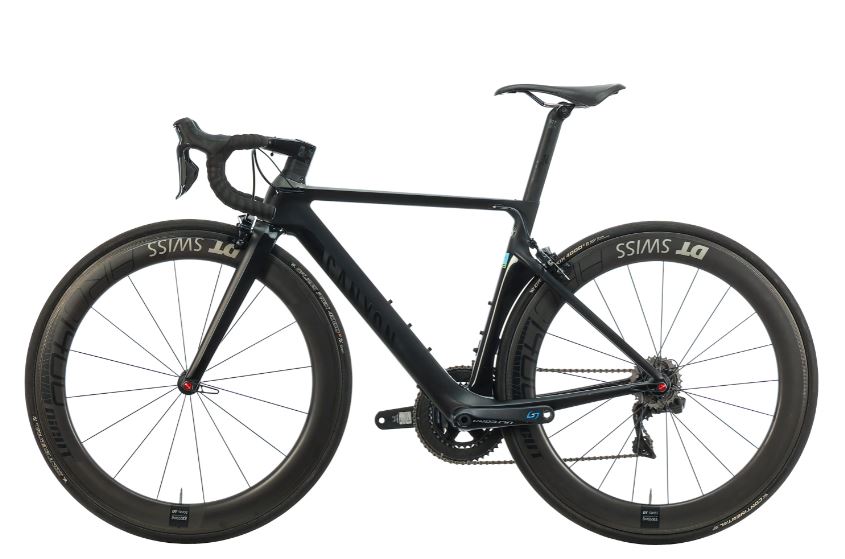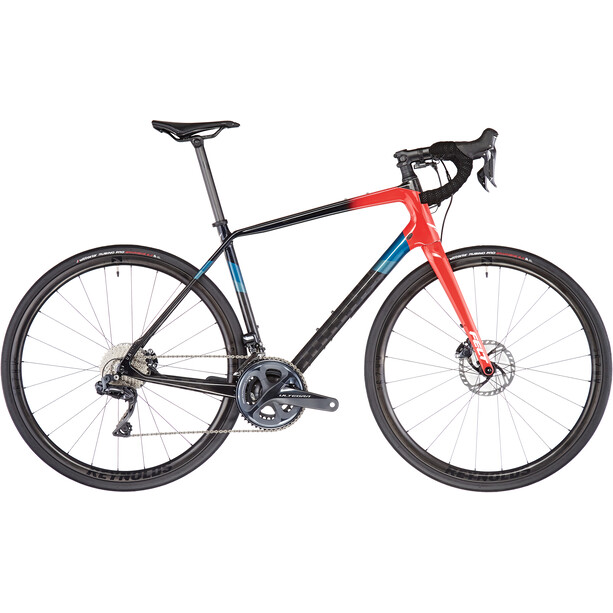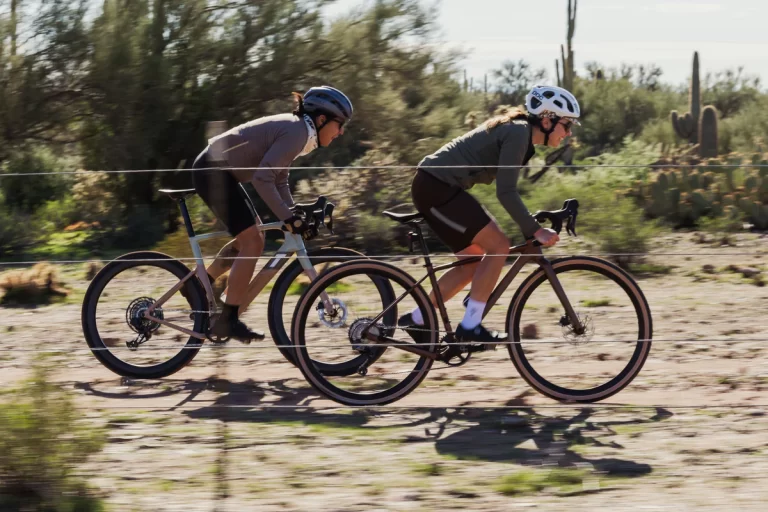The Role of Suspension in Road Bikes: A Seasoned Cyclist’s Perspective

Key Point Summary of The Role of Suspension in Road Bikes:
- Suspension Improves Comfort: By absorbing bumps and vibrations, suspension systems make long rides more comfortable.
- Vibration Damping Enhances Control: Smoother handling leads to better control over the bike, allowing for a safer and more enjoyable ride.
- Adaptability to Varied Terrain: Suspension systems help road bikes adapt to a broader range of terrains, making them versatile.
- Advancements in Technology: Modern suspension systems are lightweight and efficient, minimizing the traditional drawbacks like added weight and reduced power transfer.
As someone who’s pedaled through the ranks—from the jittery first races on a mountain bike to the grueling gravel grinds and the mud-spattered thrill of cyclocross—I’ve come to appreciate every nuance of my bikes, especially when it comes to suspension. It’s fascinating how this one aspect can so profoundly influence the comfort, handling, and overall performance of a road bike, regardless of whether you’re a fresh-faced newbie to the scene or you’ve got some miles under your belt.
Suspension: Not Just for Mountain Bikes Anymore
Historically, suspension forks and shock absorbers were the territory of mountain and gravel bikes—machines designed to conquer rugged terrains where the ability to absorb shocks isn’t just a luxury; it’s a necessity. But as I ventured into road cycling, I noticed something interesting. The tarmac isn’t always as smooth as one might hope. Whether it’s the result of relentless traffic pounding the asphalt into submission or the natural wear and tear inflicted by the elements, road surfaces can be surprisingly harsh on the rider.

This is where suspension comes into play. On a road bike, the suspension isn’t about handling the next rock garden or root maze; it’s about taming the relentless vibration and the occasional pothole that can turn an exhilarating ride into a teeth-rattling ordeal. The key is subtlety. Unlike the robust systems found on mountain bikes, road bike suspension systems are designed to be lightweight and to offer just enough give to smooth out the ride without compromising efficiency or speed.
The Comfort Equation
There’s no denying it: comfort matters. During my earlier days, riding a rigid bike on a century ride, I learned a hard lesson about fatigue. The constant vibration and shock from the road didn’t just wear on my muscles; they sapped my morale. Once I switched to a bike with a more forgiving setup, including a basic suspension system, the difference was night and day. The reduction in fatigue meant I could ride longer, enjoy more of the scenery, and still have enough energy left to sprint to the café stop.
The Control Factor
Handling and control are crucial, especially when you’re descending at speed or navigating through a tight corner. Suspension helps by maintaining more consistent contact between your tires and the road surface. This improved traction has saved my skin more times than I care to admit, allowing for sharper turns and more confident braking.

The Versatility of Modern Road Bikes
Today’s road bikes are not just confined to smooth asphalt. With the rise of endurance and adventure cycling, riders are increasingly seeking bikes that can handle a mix of terrains. Enter the suspension-equipped road bike. These bikes blend the efficiency of a traditional road bike with the adaptability of a gravel bike. I’ve personally enjoyed the freedom of being able to veer off the main road onto gravel or cobblestone paths without a second thought about my bike’s capability.
Technological Advances: Lighter, Smoother, Better
One of the most exciting developments in recent years is the advancement in suspension technology. Early adopters of suspension on road bikes had to contend with added weight and concerns about energy efficiency. However, modern systems like short-travel forks and seatpost suspensions have mitigated these issues, offering lightweight solutions that absorb shocks without sapping pedaling power.
Personal Tips
Choosing the Right Setup: My journey through different cycling disciplines taught me the importance of choosing the right suspension setup for your riding style and terrain. For mostly smooth roads with occasional rough patches, a bike with minimal suspension or vibration damping technology might be all you need. However, for those who venture onto mixed terrains, investing in a bike with more advanced suspension features can make a world of difference.
Maintenance Matters: Just like any part of your bike, suspension systems require regular maintenance to perform at their best. I learned this the hard way when neglect led to a less responsive ride and eventually a costly repair bill. Keeping your suspension clean and serviced extends its life and ensures your ride remains smooth.
Experiment with Settings: Don’t be afraid to tweak your suspension settings. What worked for me on a mountainous gran fondo was vastly different from my preferred setup for a flat century ride. Experimenting with different settings helped me find the perfect balance for each ride.

The Role of Suspension in Road Bikes: Wrapping It Up
From a seasoned cyclist’s perspective, the inclusion of suspension in road bikes is more than just a trend; it’s a game-changer. It’s about comfort, control, and the freedom to explore beyond the smooth asphalt without hesitation. Whether you’re just starting out or you’ve been in the saddle for years, understanding and embracing the role of suspension can elevate your cycling experience. Remember, cycling is not just about enduring the ride; it’s about enjoying every mile with confidence and comfort.
For riders seeking exceptional vibration damping and overall comfort without the need for traditional suspension systems, the Cervelo Caledonia-5 and Felt VR series come highly recommended. These models exemplify their brands’ commitment to innovative design philosophies that prioritize rider comfort and performance.
Cervelo Caledonia-5: The Cervelo Caledonia-5 is a modern road bike that blurs the lines between performance, comfort, and versatility. It’s designed to handle a mix of terrain, from smooth asphalt to rougher, less-traveled roads. The Caledonia-5 utilizes a carbon fiber frame that is engineered for both stiffness and compliance. This model is particularly noted for its ability to absorb road vibrations through a carefully designed frame and fork, along with clearance for wider tires that can further enhance ride comfort and vibration damping. The Caledonia-5 doesn’t have traditional suspension but leverages its frame technology and design features to improve rider comfort.

Felt VR Series: The Felt VR series is designed with versatility and endurance in mind, ideal for long rides across varied road conditions. The VR series bikes feature a carbon fiber frame that is engineered to offer a balance between performance and comfort. Key to its design is the use of specific carbon layup techniques and frame geometries that enhance vibration damping and compliance. This series is well-regarded for its ability to reduce fatigue on long rides, thanks to these features and its capability to accommodate wider tires for additional shock absorption and comfort.

Both the Cervelo Caledonia-5 and Felt VR series exemplify their respective brands’ approaches to incorporating vibration damping and comfort into their road bikes without relying on traditional, mechanical suspension systems.
FAQ
Do you need suspension on a road bike?
No, you don’t necessarily need suspension on a road bike, especially if you primarily ride on smooth, paved surfaces. However, for comfort and control on varied or rough terrain, some form of vibration damping or suspension can be beneficial.
How important is suspension on a bike?
Suspension on a bike is important for improving comfort, control, and traction, particularly over rough terrain or for longer rides where fatigue from vibration can be a factor.
What is the use of suspension in cycling?
The use of suspension in cycling is to absorb shocks and vibrations from uneven surfaces, enhancing rider comfort, improving control, and reducing fatigue.
Why is suspension important in a motorcycle?
Suspension is important in a motorcycle to absorb bumps and maintain tire contact with the road, providing a smoother ride, better handling, and increased safety.
Happy cycling, and may your adventures on the road bring you both joy and exhilaration!
John





